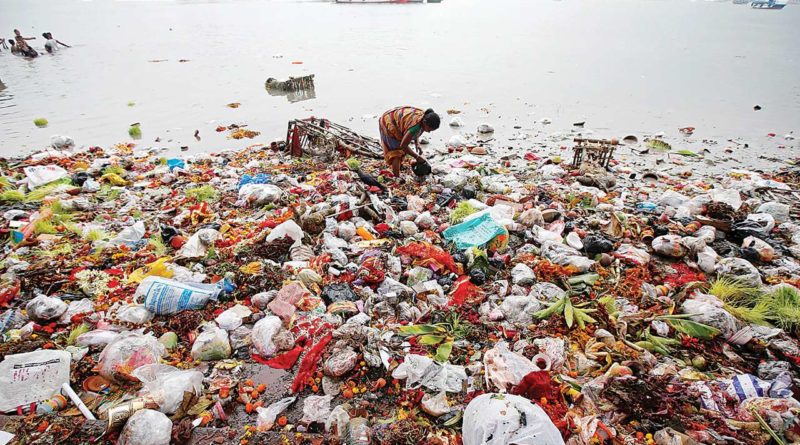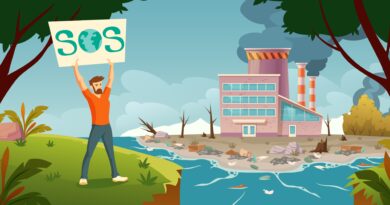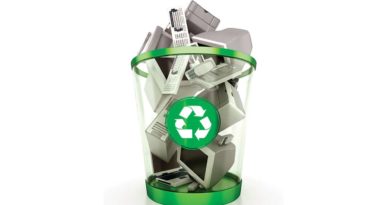Almost Rs 4,000 Crore Spent, but the Ganga Is More Polluted
The Narendra Modi government has initiated many projects to clean up the Ganga, but pollution has increased at several sites where the river’s water is monitored. The water is not fit for drinking, bathing or domestic purposes.
Professor G.D. Agarwal, the prominent environmentalist who spent several years for the cause of cleaning up river Ganga, passed away on October 11. He had been on a fast for 112 days. Professor Agarwal wrote to Prime Minister Narendra Modi thrice, demanding that the government ensure uninterrupted flow of Ganga. He sought to remind the PM of his visit to Varanasi in 2014 and his proclamation that “maa Ganga had called him”.
However, the prime minister’s office did not respond to Agarwal. He eventually sacrificed his life. The question now is how has the Modi government fared on its promise to clean up the Ganga and ensure uninterrupted flow.
The response to an RTI filed by The Wire provides some answers. The Ganga has not become any cleaner under the Modi government. In fact, the river’s contamination levels have increased at many places since 2013, even though Rs 5,523 crore was released for cleaning the Ganga between 2014 and June 2018. Of the funds released, Rs 3,867 crore has already been spent.
Pollution has risen at several sites
According to information provided by Central Pollution Control Board (CPCB), an organisation under the ministry of environment, forest and climate change, the amount of Biochemical Oxygen Demand (BOD) in the Ganga river was very high in 2017. Information also reveals that the quantity of Dissolved Oxygen (DO) is continuously decreasing at most places.
BOD is the amount of oxygen needed by biological organisms to break down non-essential organic material in the water. The higher the BOD level, the faster oxygen present in water would deplete. A high BOD level is harmful for both the river and the organisms that live in it.
Also Read: Read: G.D. Agarwal’s Third and Final Letter to PM Modi on Saving the Ganga
Dissolved oxygen in another parameter used to measure pollution. A high DO level means the water is less polluted.When pollution rises, the oxygen is used to decrease it.
Scientific parameters dictate that the BOD level in a clean water body should be less than 3 milligram/litre, whereas the DO level should be more than 4 mg/l. If BOD level exceeds 3 mg/l, the water is not suitable for even domestic purposes, let alone consumption.
The CPCB has been examining the water quality of rivers since 1980. At present, it examines the 2,525 km long Ganga river at 80 sites, up from 62 a few years ago.

A CPCB report said that in 2017, the BOD level of Ganga was more than 3 mg/l at 36 of the 80 sites and 2-3 mg/l at another 30. In 2013, it was more than 3 mg/l at 31 sites and 2-3 mg/l at 24.
According to the CPCB criteria, if the BOD level of water is 2 mg/l or less and the DO level is 6 mg/l or more, the water is fit for drinking without any treatment. However, if the BOD level is 2-3 mg/l, water treatment is essential. If such water is consumed without being treated, it may cause serious diseases.
If the BOD level is more than 3 mg/l and the DO level is less than 5 mg/l, the water is not suitable even for bathing. The CPCB report reveals that almost at half the sites where Ganga water is tested, the water is unsafe for domestic purposes.
Water is only safe for consumption in Uttarakhand
The CPCB monitors the quality of Ganga water from Gangotri, where the river originates, to West Bengal. Its water is pure at Gangotri, Rudraprayag, Devprayag and Rishikesh, with BOD level at 1 mg/l and DO level between 9 and 10 mg/l.
However, as the Ganga flows forth, the contamination levels keep rising. At Haridwar, Uttarakhand’s famous religious site, the condition is extremely pathetic. The BOD level stands at 6.6 mg/l. However, it has seen a decrease from the 2013 level of 7.8 mg/l.
High levels of pollution prevail at Varanasi, Allahabad, Kannauj, Kanpur, Patna, Raj Mahal, Dakshineswar, Howrah and Darbhanga Ghat in Patna. In Varanasi, Modi’s constituency, the maximum BOD level was 5.1 mg/l in 2013. It was to 6.1 mg/l in 2017. Similarly in Allahabad, the BOD level was 4.4 mg/l in 2013 and increased to 5.7 mg/l.
Besides Aligarh and Bulandshahar in UP, the BOD level of Ganga has gone up at Tribeni, Diamond Harbour and several other places in West Bengal.
In May 2015, the Modi government approved its flagship Namami Gange program, under which guidelines were formulated for cleaning the Ganga river. These included treatment of sewage from cities, treatment of industrial pollution, cleaning the river’s surface, rural sanitation, riverfront development, construction of river banks and cremation ghats, tree plantation and conservation of biodiversity.
o far, 221 projects have been sanctioned under the program at an estimated cost of Rs 22,238 crore. Of these, 105 projects were sewage treatment plants, undertaken at a cost of Rs 17,485 crore. Just 26 projects have been completed. Of the 67 projects for riverfront development, construction of banks and ghats and cleaning of the river bed, only 24 have been completed.
Professor Agarwal, in his letter to the PM, had expressed doubts over the efficiency of the Ganga projects started by the government. Agarwal felt the projects for cleaning the Ganga were beneficial only to the corporate sector and business houses and did little to ensure uninterrupted flow of Ganga.
In addition, the Comptroller and Auditor General (CAG) has also questioned some of these projects. In its 2017 report, CAG said, “Even after six and a half years of settlement with the Indian Institute of Technology (IIT), the long term work plans of the National Mission for Clean Ganga (NMCG) could not be completed. It has been more than eight years since the formation of the National Ganga River Basin Authority, yet NMCG does not have a river basin management plan so far.”
Water unsafe for domestic purposes or irrigation
In addition to BOD and DO level, the quality of Ganga river water is determined on the basis fecal coliform and total coliform bacteria levels, pH level, and conductivity.
The CPCB stipulates that total coliform bacteria should be 50 mpn (most probable number) or less in every 100 ml of drinking water. If the water is used for domestic purposes, it should be 500 mpn or less. If higher levels of coliform bacteria are found in drinking water, it causes nausea, vomiting, fever and diarrhoea.
The Ganga water does not meet this standard anywhere except Gangotri, Rudraprayag and Devprayag in Uttarakhand.
In Haridwar, the mpn is 1,600. In Allahabad it is 48,000, 70,000 in Varanasi and 1,30,000 in Kanpur. In Bihar’s Buxar, the level is 1,60,000, the same as Patna. In West Bengal’s Howrah, it is a shocking 2,40,000.
The pH level of a water body determines if it can be used for irrigation. The safe level of pH is 6 to 8.5. However, the 2017 report states that the pH level of Ganga water is above 8.5 at some places, making it dangerous for irrigation too.
Also Read: It Will Take More than a Prime Minister to Clean Up the Ganga
The Ganga flows through five states. The State Pollution Control Board (SPCB) of every state checks the quality standard of Gangetic water every month and sends the report to CPCB. The Central body compiles the final report based on the average of data collected.
If the Ganga’s monthly water quality is analysed, the picture is even more frightening. During certain months, the pollution is significantly higher than the average. Industrial pollution and domestic waste have been identified as the reasons behind the Ganga’s deplorable condition.
Published by thewire.in / Source https://bit.ly/2yDhwlI




